Yandex demodulation
A holiday is when friends get together and have a good time. Recently, the Yandex Museum team organized the Demodulation retrocomputing festival, a festival for everyone who is interested in the history of technology.
We want to tell you about how the event took place, what types of equipment were there and why the guests had to cut the wires in a certain order and start the Apple 1 processor. And we will also share with Habr records of all reports.
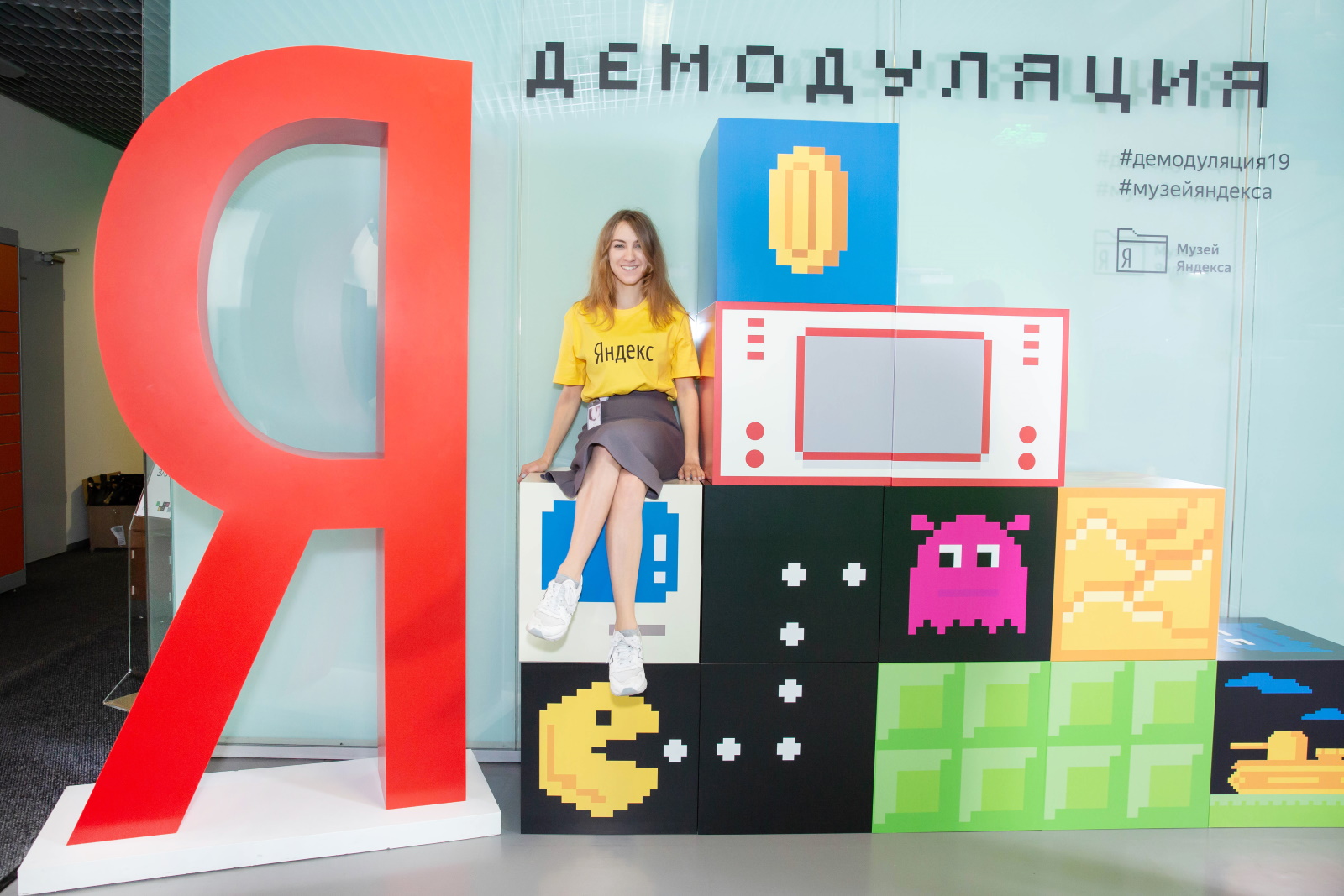
Yandex Museum is a place where we collect interesting samples of technology, keep their history and help our guests figure it out. Our museum has been open in public for more than a year, but only recently have we begun to organize events. During the spring campaign in support of the “Museum Night”, we did not take into account the number of people who wanted to touch history, so we decided to transfer Demodulation to the spacious premises of the Yandex office. And not in vain. This day more than 500 people visited us!
So what have we done. First of all, we selected and temporarily transferred from the museum the most interesting examples of retro-engineering. For example, any of our guests could work on NeXTcube. On the same computer, almost 30 years ago, Tim Berners-Lee created the first browser editor. Nearby, we set up the Soviet BK-0010.01, whose “drive” could also be a regular cassette recorder. And they also “invited” the great-grandfather of modern workstations - IBM 5150. It is believed that it was in this model that the keyboard shortcut Ctrl + Alt + Del was first used.

 AT&T UNIX PC Workstation GUI
AT&T UNIX PC Workstation GUI
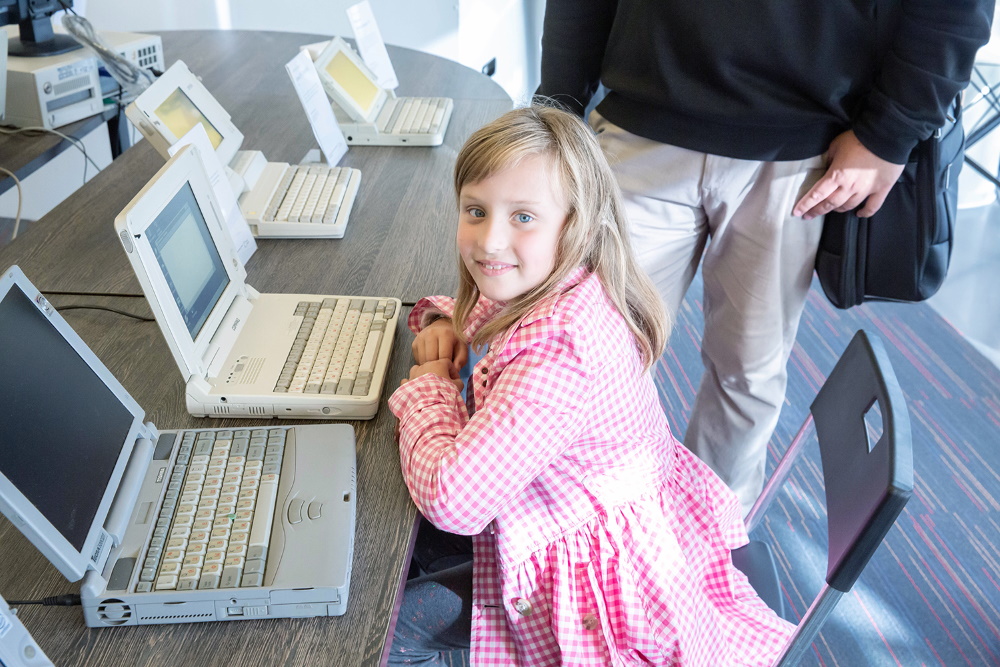
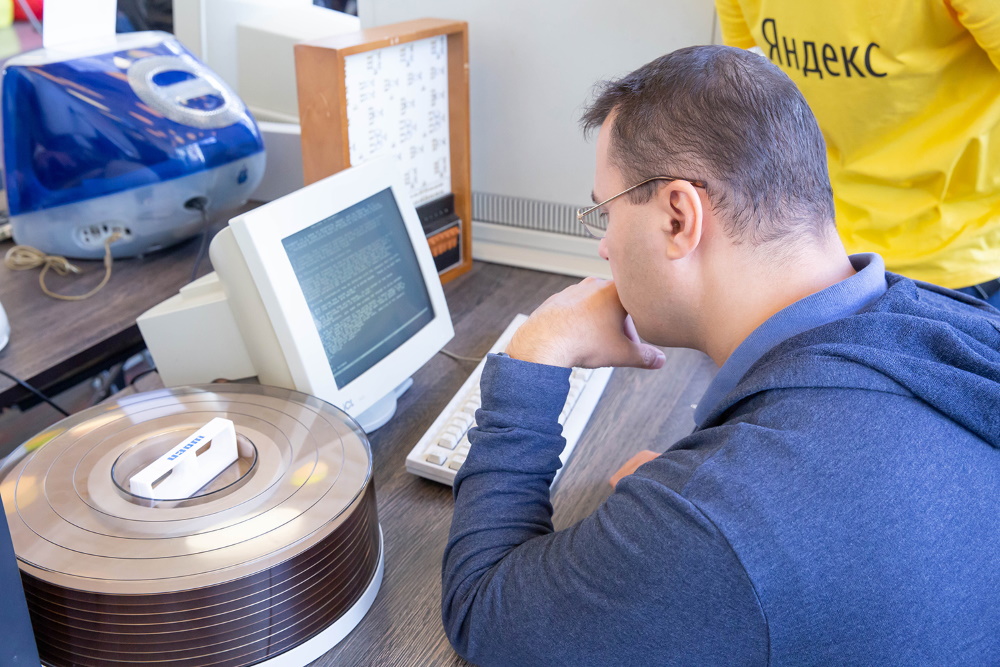 Zork game in Micro PDP-11 terminal
Zork game in Micro PDP-11 terminal
 Apple iMac G4
Apple iMac G4
 PC QUANT 4C running Tetris
PC QUANT 4C running Tetris
Enthusiast engineer Artyom Kashkanov brought a real relay computer from Nizhny Novgorod, which he developed himself - huge, slow and very cool. We recommend a series of his posts on Habré with a story about the project.
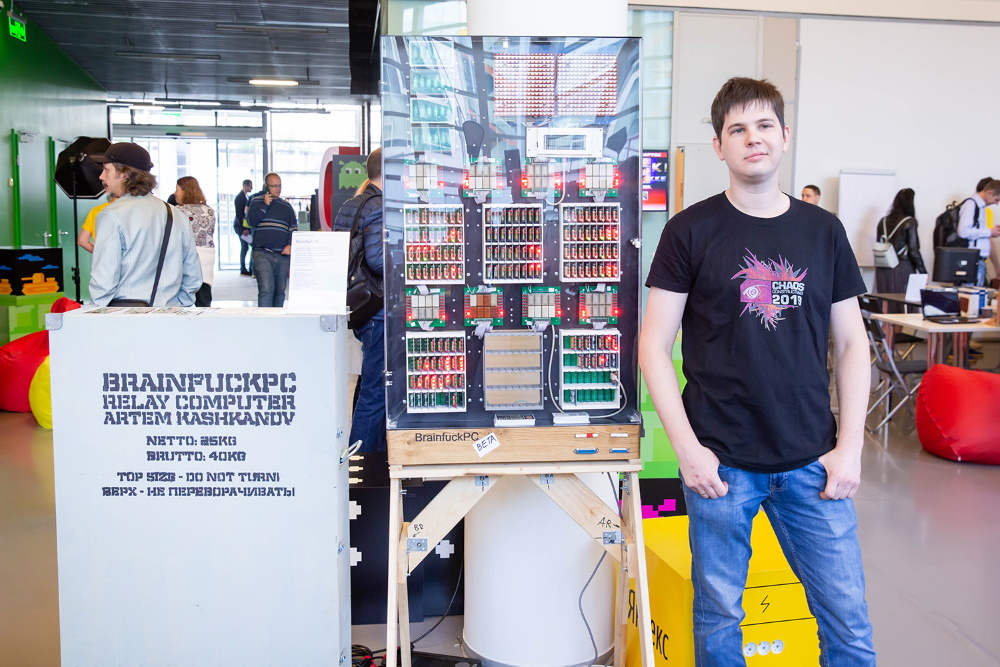
Our friends from the Museum of Soviet Slot Machines showed their exhibits, the line of which almost never ran out.
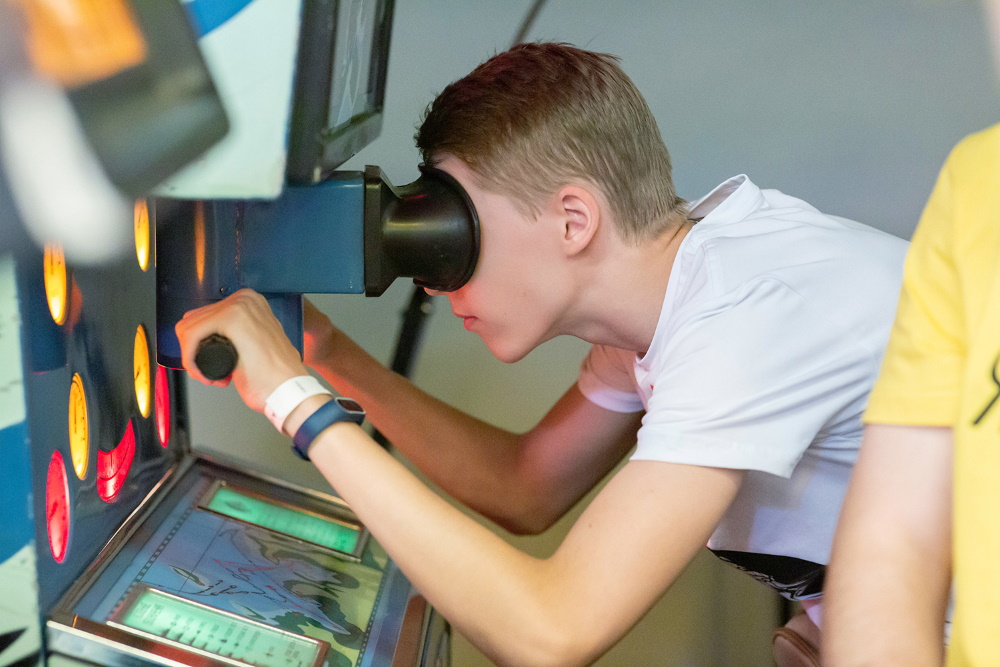
Yandex employee Eugene Gagauz brought to the festival a personal collection of mechanical computing devices: arithmometers, adders, addiators, pascalins and the good old slide rule. In the photo - keyboard and disk adders.
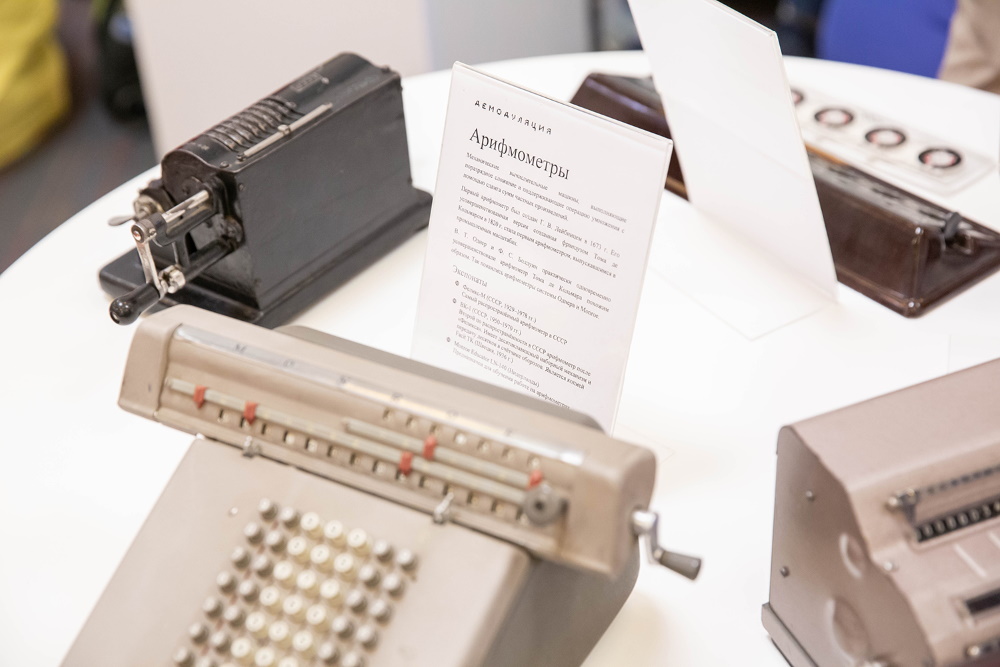

We also did not forget about games and retroconsoles. And the most vivid emotions were right here.



Technique is great, but we wanted our guests not only to sit in front of the monitors, but also to move, communicate, create something. Therefore, together with our friends, we came up with a number of activities.
Participants in the Demodulation quest received homemade timers that needed to be stopped by cutting the wires in the correct order. Tips could be earned by participating in various activities. For example, gaining 200 points in the game “Well, wait a minute!” Or deciphering the text recorded on the punch card.
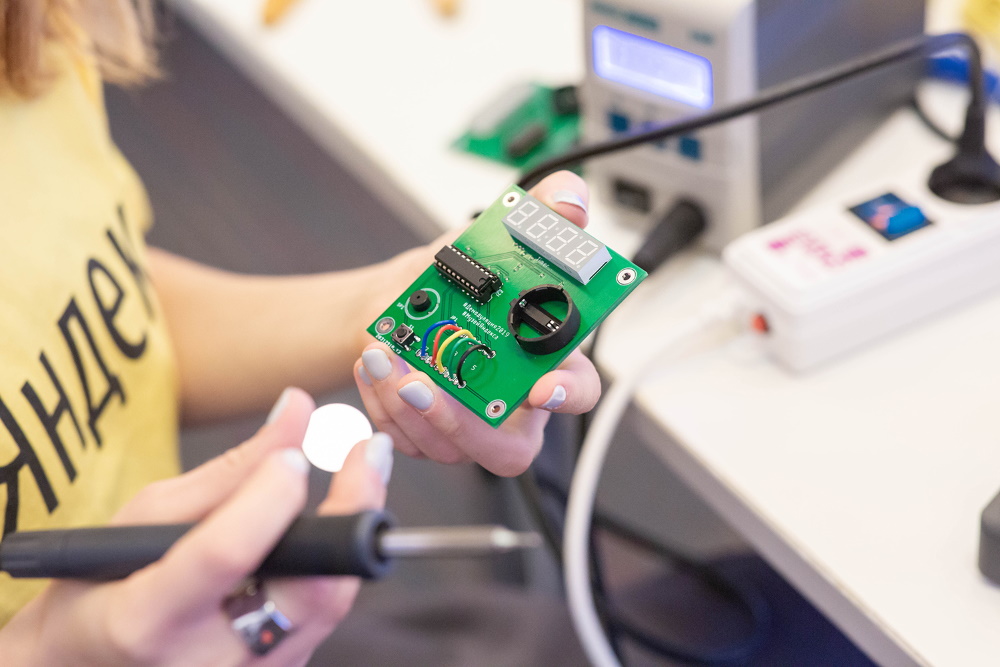

Those who wish could take part in the launch of the MOS Technology 6502 processor - it was Steve Wozniak and Steve Jobs who used it in Apple 1. The guys from SmartyKit helped us with the guest kits .

Previously, to call someone, you had to call the number to a special person - the subscribers were connected manually. Inconvenient, of course, but there is something in it. At Demodulation, Ostranna’s creative team (Gennady Kruglov and Yulia Salnikova) assembled a real non-automatic telephone exchange and several telephones for the guests - you could not only try to talk with someone, but also stand by the telephone operator.

And also our friends from retroscene.org (who have been organizing the demopati Multimatograf, DiHalt, CC, CAFe, etc.) for several years held a drawing contest on the legendary ZX Spectrum. Participants - from the first to see Spectrum to advanced - sat down to draw in six, at the end of their work they were shown on a large screen, and a small prize was awarded to the winner, selected by applause of the hall. And the next six sat down at computers. Competition entries can be seen here .
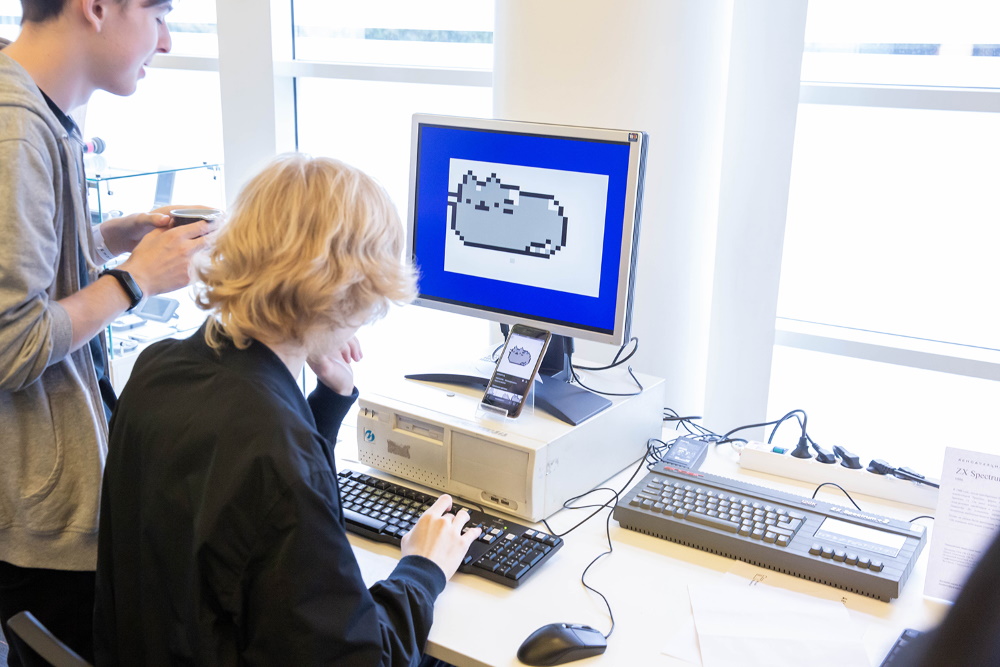
By the way, we remind you that right now there is our competition for developing games for the ZX Spectrum. Do not pass by!
In general, it was not boring.
In parallel with the exhibition of exhibits and the organization of activities, we invited experts to make presentations. We recorded the reports on video, published on YouTube and share them with Habr readers.
The holiday ended with the performance of Dmitry “Quiet” Smirnov and Leonid “Lenin” Koshelev. Musicians combine an electric guitar with eight-bit music, reminiscent of the sounds of old game consoles and computers with eight-bit processors. Unfortunately, the video has not been saved, but you can find another track.
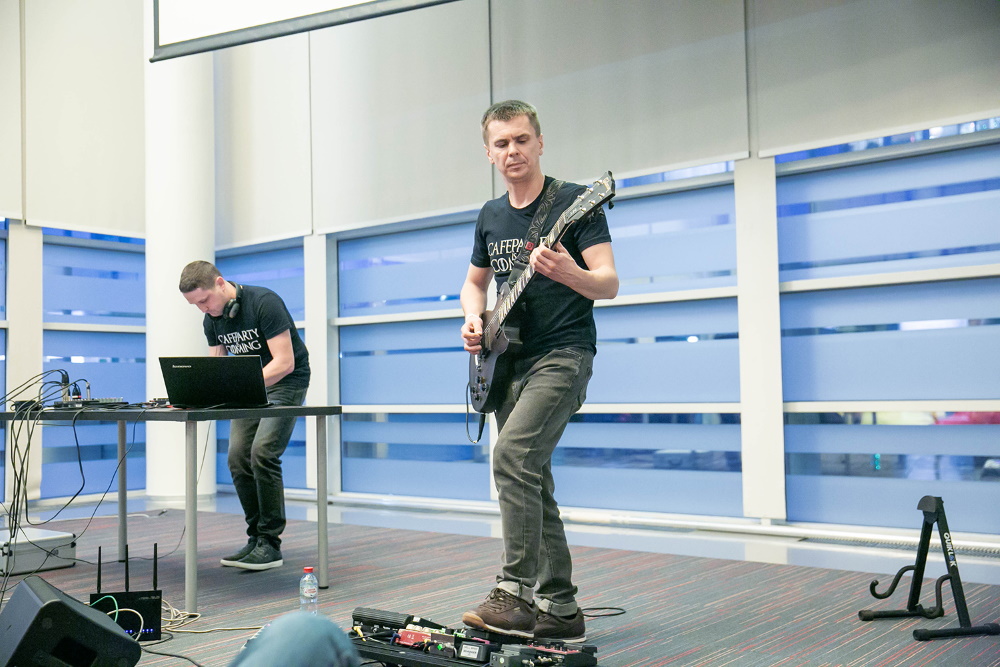
"Demodulation" is a new experience for the Yandex Museum team. We have never seen such a number of enthusiasts, experts, and just lovers of technology. We thank our friends for their help in organizing the holiday, and our guests for their support and good mood!
We want to tell you about how the event took place, what types of equipment were there and why the guests had to cut the wires in a certain order and start the Apple 1 processor. And we will also share with Habr records of all reports.

Yandex Museum is a place where we collect interesting samples of technology, keep their history and help our guests figure it out. Our museum has been open in public for more than a year, but only recently have we begun to organize events. During the spring campaign in support of the “Museum Night”, we did not take into account the number of people who wanted to touch history, so we decided to transfer Demodulation to the spacious premises of the Yandex office. And not in vain. This day more than 500 people visited us!
So what have we done. First of all, we selected and temporarily transferred from the museum the most interesting examples of retro-engineering. For example, any of our guests could work on NeXTcube. On the same computer, almost 30 years ago, Tim Berners-Lee created the first browser editor. Nearby, we set up the Soviet BK-0010.01, whose “drive” could also be a regular cassette recorder. And they also “invited” the great-grandfather of modern workstations - IBM 5150. It is believed that it was in this model that the keyboard shortcut Ctrl + Alt + Del was first used.

 AT&T UNIX PC Workstation GUI
AT&T UNIX PC Workstation GUI

 Zork game in Micro PDP-11 terminal
Zork game in Micro PDP-11 terminal
 Apple iMac G4
Apple iMac G4
 PC QUANT 4C running Tetris
PC QUANT 4C running Tetris
Enthusiast engineer Artyom Kashkanov brought a real relay computer from Nizhny Novgorod, which he developed himself - huge, slow and very cool. We recommend a series of his posts on Habré with a story about the project.

Our friends from the Museum of Soviet Slot Machines showed their exhibits, the line of which almost never ran out.

Yandex employee Eugene Gagauz brought to the festival a personal collection of mechanical computing devices: arithmometers, adders, addiators, pascalins and the good old slide rule. In the photo - keyboard and disk adders.


We also did not forget about games and retroconsoles. And the most vivid emotions were right here.



Technique is great, but we wanted our guests not only to sit in front of the monitors, but also to move, communicate, create something. Therefore, together with our friends, we came up with a number of activities.
Participants in the Demodulation quest received homemade timers that needed to be stopped by cutting the wires in the correct order. Tips could be earned by participating in various activities. For example, gaining 200 points in the game “Well, wait a minute!” Or deciphering the text recorded on the punch card.


Those who wish could take part in the launch of the MOS Technology 6502 processor - it was Steve Wozniak and Steve Jobs who used it in Apple 1. The guys from SmartyKit helped us with the guest kits .

Previously, to call someone, you had to call the number to a special person - the subscribers were connected manually. Inconvenient, of course, but there is something in it. At Demodulation, Ostranna’s creative team (Gennady Kruglov and Yulia Salnikova) assembled a real non-automatic telephone exchange and several telephones for the guests - you could not only try to talk with someone, but also stand by the telephone operator.

And also our friends from retroscene.org (who have been organizing the demopati Multimatograf, DiHalt, CC, CAFe, etc.) for several years held a drawing contest on the legendary ZX Spectrum. Participants - from the first to see Spectrum to advanced - sat down to draw in six, at the end of their work they were shown on a large screen, and a small prize was awarded to the winner, selected by applause of the hall. And the next six sat down at computers. Competition entries can be seen here .

By the way, we remind you that right now there is our competition for developing games for the ZX Spectrum. Do not pass by!
In general, it was not boring.
In parallel with the exhibition of exhibits and the organization of activities, we invited experts to make presentations. We recorded the reports on video, published on YouTube and share them with Habr readers.
- Retrocomputer emulators help everyone who is interested in the history of technology and old technology: programmers, researchers, retrogamers . Nikita Zimin told what emulators are, how they are arranged and whether it is difficult to write them.
- The history of sound in game consoles . Dmitry Semenovykh gave a lecture on the history of music of console games, key composers of the golden era of game development, as well as their direct contribution to modern musical culture.
- Recreating retrocomputers on a modern technological base: FPGA . Alexander Kholodov told what FPGA is, how they are arranged and how to program them. We will discuss their application for reconstructing historical computers using the MIST and MISTer projects as examples.
- Early methods of sound synthesis and algorithmic composition in Python . A lecture by Pyotr Sovetov, which dealt with simple techniques for creating sound that were used on computers of the past, including games. Particular attention was paid to the generation of music using programs - the so-called algorithmic composition.
- Spectrofon: an electronic magazine in the pre-Internet era . Speech by Yuri Matveev about “Spectrofon” is an electronic Russian magazine about ZX Spectrum, published from December 1993 to July 1997, with a total of 24 issues. One of the creators of the magazine told the whole story of the publication - from the inception of the culture of magazines on floppy disks to the circumstances of the closure of the Spectrophone.
- The second life of popular computer architectures is the PDP-11 emulator . Georgy Barkan spoke about the history of the creation of the DEC PDP-11 emulator by Russian developers commissioned by the manufacturer. An excursion into the evolution of hardware and software from minicomputers of the seventies to workstations of the nineties.
- At the demoscene, Oleg Senin told what the demoscene is, the history of its occurrence, the main stages of development both in Europe and the countries of the former USSR ; He introduced the landmark works of recent years, and also answered the question: how to become a part of this amazing and multifaceted world of cyber art.
- Under the hood of retrogames: what the developers were hiding . We talked with Alexander Surkov about why the games look and work exactly the way we used to, and looked at what tricks the developers of computer games went to surprise the players.
- “Alice Kills at Midnight,” or Fears of Technology in the 19th – 20th Centuries . “If you ask Alice at exactly midnight, then she turns into an evil Alice,” says the 2018 children's horror story. No need to run to a psychiatrist - the appearance of such texts is natural. Alexandra Arkhipova told how fears were formed regarding telegraph, telephone, Internet and voice assistants in Western Europe and North America and in Russia.
- Triple Brainfuck, or What is Madness . If you build a relay computer in the 21st century, then it is by far the fastest in the world, so that the Brainfuck esoteric programming language is its native set of instructions, and that it is fully 16-bit! And then it’s not bad to assemble another Brainfuck computer - already on lamps and decatrons, as well as to curb wind power and the effect of sticking air jets and create a neuromorphic processor on pneumatic elements. About this - at a speech by Artyom Kashkanov.
- History of home computers . Peter Sobolev spoke about the emergence and spread of home computers in 1970-1990. Using concrete examples, we saw how different solutions were possible at a time when no one else knew what an ordinary person needed from a computer and why, and how these ideas were gradually formed. About what successful and unsuccessful technical compromises led to the success and failure of companies.
- The evolution of video games. Yaroslav Kravtsov discovered many interesting facts . Which video game came first? What game was written on a computer for $ 120,000? What a curious problem was the first slot machine? In which game was the first multiplayer? What game did Bill Gates advertise with a shotgun in his hands? What do “Wait a minute!” And “Dandy” have in common? Which game nearly destroyed the gaming industry? A lecture on video games that changed the gaming industry.
- Beyond Intel and Linux - unusual processors and operating systems . Lecture by Dmitry Zavalishin. The current architecture of the Intel processor and Unix operating system almost dominate the modern world. However, in the history of processors and systems, there have been many deviations from this order of things.
* * *
The holiday ended with the performance of Dmitry “Quiet” Smirnov and Leonid “Lenin” Koshelev. Musicians combine an electric guitar with eight-bit music, reminiscent of the sounds of old game consoles and computers with eight-bit processors. Unfortunately, the video has not been saved, but you can find another track.

"Demodulation" is a new experience for the Yandex Museum team. We have never seen such a number of enthusiasts, experts, and just lovers of technology. We thank our friends for their help in organizing the holiday, and our guests for their support and good mood!
All Articles